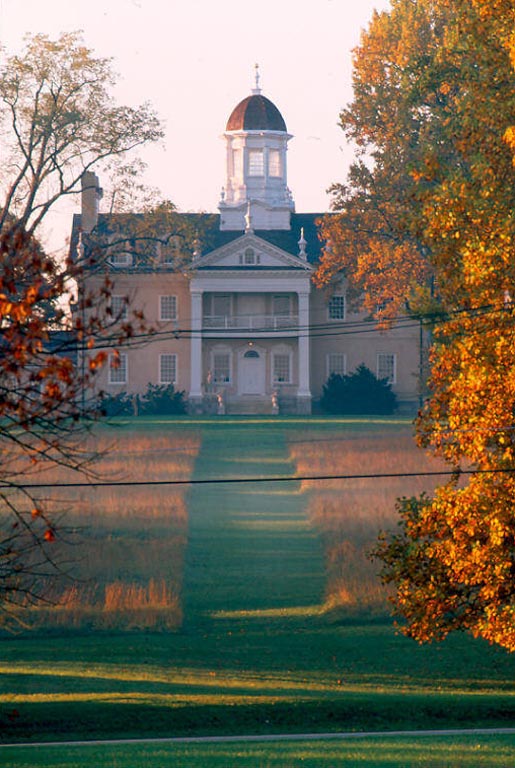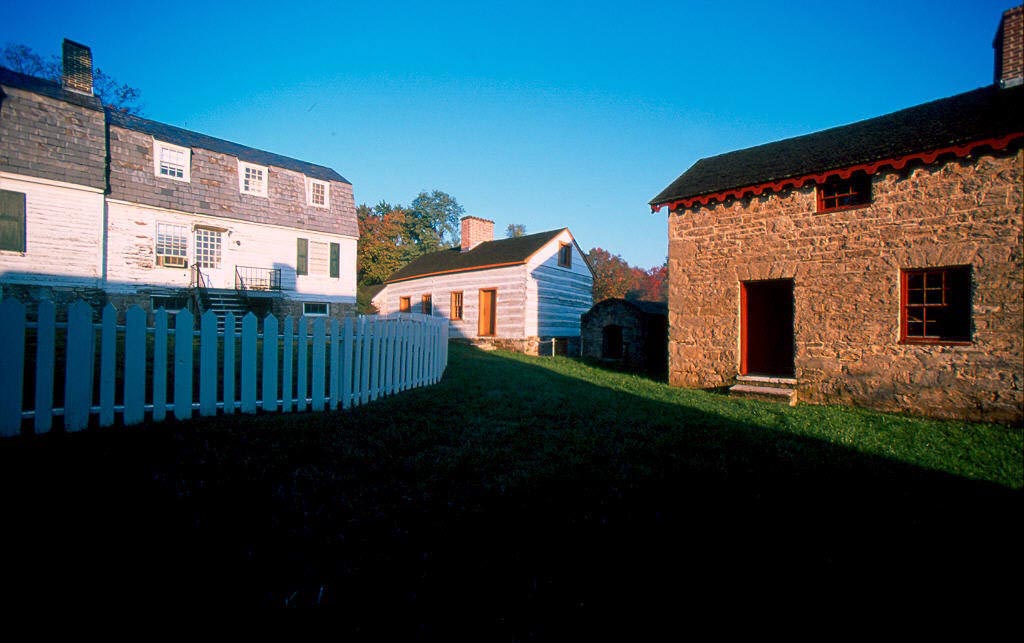 |
The Hampton Mansion
(Hampton NPS photo) |
Several months ago, I decided to go to Baltimore and see Fort McHenry National Monument
and Historic Shine (!!), which was really cool. They have a new visitors center there, and the interpretation is well done, and made me feel very patriotic about the Star-Spangled Banner. While there I learned about another national park site in the area that was once a large plantation, located in Towson, MD. Finding my way out there, I luckily caught the last tour of the day there, and really took to the place. By the end of the tour, I wanted to buy the park handbook and learn more*.
The large plantation was and is (in a way) called Hampton, and is now preserved by the NPS as Hampton National Historic Site. It originally was identified for preservation for the architectural quality of its main house, one of the largest examples of Georgian architecture in the area (The house is pictured above). The house and plantation were the summer and later permanent home to seven generations of the Ridgley family, one of the most prosperous and wealthy families in the region. At one time the estate held over 25,000 acres, hundreds of black slaves, and many agricultural and industrial pursuits.
Much of the home and its contents is original, and in a sense when you walk into the house, you feel like walking back in time, when the scions of society would gather in such a house and talk about politics and current events. To me, it is very interesting to see a place where so many generations of a family lived and called their own, while America changed around them. In a sense, it is a cross section of the American experience, from one family's perspective. From the building of the house in the late 1700s to the 1940s (when it was given to the NPS), the Ridgleys' world changed in many ways.
Possibly one of the most significant changes that occurred in the 19th Century at Hampton was the coming of the Civil War. Originally, the Ridgleys' prosperity was driven by a Ironworks that the owned and operated in the area. However, by the mid-1800s, their Ironworks had closed and agricultural value of the land (now only 4,500 acres) was the primary driver of wealth. With Maryland as a slave state, the primary workers of such a large farm operation were enslaved blacks. At the time of the Civil War, the master of Hampton, John Ridgley owned 61 slaves.
 |
| Some of the slave quarters at Hampton (Hampton NPS photo) |
When the Civil War began, Maryland was divided. Many of the eastern counties relied, like the Ridgleys, on slave labor for Tobacco and other various crops, while in western Maryland, many yeoman farmers and recent immigrants resented the wealth and power of the large plantation owners. After the fall of Sumter, Maryland remained bitterly divided, as various areas and families identified as unionists or as confederates. As slaveowners, the Ridgleys identified with the Confederacy; Charles Ridgley, John's son, helped organize a local Confederate cavalry unit, the Baltimore County Horse Guards. Soon after the Baltimore Riot of April 1861, helped guard against Union incursions into Baltimore and sought to destroy railroad bridges leading into the city. However, union authorities began to arrest leaders of the various confederate militia companies in the area, and faced with imprisonment in Fort McHenry, Charles disbanded the cavalry company, and remained quiet for the remainder of the conflict. Some of Ridgleys' relatives, however, especially David Ridgley Howard fought with the Confederacy, including at the Battle of Gettysburg, where he lost a leg during the last day's fight.
With emancipation in Maryland in 1864, Hampton and the Ridgleys began their slow decline. In the following years, much of the original estate would be subdivided to heirs and to pay off debts. The Ridgleys lived a comfortable life for many years at Hampton, and indeed, some of the former slaves stayed on at the mansion as servants and tenant farmers. However, when John Ridgley, Jr. gave Hampton to the Park Service, only the original mansion and 63 acre tract remained. Hampton provides a cross-section into one family's American experience, warts and all.I think that through the lens of Hampton, it is easy to see the American Dream, for white and eventually black, for all of us.
 |
Eliza Ridgely III and servant Nancy Davis in 1863
(Hampton NPS photo) |
Sources: Historic Hampton, Inc.
, Hampton National Historic Site Guidebook (Virginia Beach, VA: Donning Co., 2010) and
Hampton National Historic Site, NPS
(*Since the bookstore was closing, I couldn't buy it then. I pretty much began a quest to find a copy of this book on the internet. After not much success, I eventually ended up buying a copy from the park bookstore over the phone, to which the kindly older woman over the phone who took my order said I was the first person to do such a thing).








